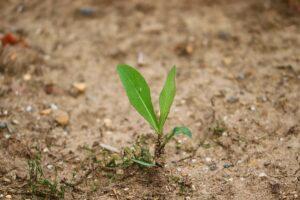Spain and northern Italy were hit by drought
A significant part of Spain is affected by drought, and in the northern part of Italy, the autumn crops grow in difficult conditions due to the lack of water, the National Meteorological Service wrote in its April international agrometeorological analysis.

(Photo: Pixabay)
According to the analysis, most of Europe was characterized by slightly above-average temperatures between the beginning of March and the middle of April. The weather was cooler than average in Scandinavia, the northern part of Russia’s European territory, and the Pyrenees, for example, saw many more frosty days than usual. In Bulgaria, the cold waves in March and April caused night frosts and thus significant damage to the blooming orchards. The weather was drier than average in the Iberian Peninsula, the southern coast of France, the northwestern part of Italy, and the Norwegian coast. In northern Italy and Spain, the sowing of summer crops is accompanied by concern, as there is very little water available for irrigation in the reservoirs, and because of this, the spring sowing is shifted towards less water-demanding crops, and instead of rice, corn and even more sunflowers are sown. In some places, unirrigated areas cannot be planted at all.
Autumn crops and spring barley are also suffering from dry conditions in Spain and Portugal
In Spain, about 60 percent of agricultural land is affected by drought. In addition to arable fields, the drought also affects fruit growing, the number of livestock is reduced due to dried out pastures and mowing fields, therefore the import of fiber fodder, and therefore its price, also increases.
In other parts of Europe, on the other hand, there was more precipitation than average in March and early April
In Denmark, Sweden, Ireland, the Benelux countries, and the United Kingdom, the sowing of spring barley was often interrupted by significant rainfall, and it is questionable whether the originally planned sowing area can be fully sown due to the rainy weather. In France and the Netherlands, by the end of March and the beginning of April, only about 8-10 percent of the sugar beet had been sown, although this ratio is usually already 50 percent.
This is the case in America and Asia
In the United States of America, about 14 percent of the corn has been sown nationally, which is a little more than usual at this time. At the same time, 18 percent of the winter wheat began to ear, and 26 percent of the stands were judged to be in good or excellent condition. At the same time, in the state of Kansas, which is the largest producer of spring wheat, 62 percent of the herd is in poor or very poor condition. In East Asia, the rainfall in the southern areas helps the development of early-sown rice, in the western parts the cool weather hindered the sowing of cotton, and in some places re-sowing became necessary due to night temperatures below 5 degrees, the National Meteorological Service announced.
MTI
Related news
AM: Government helps farmers with a loan moratorium
🎧 Hallgasd a cikket: Lejátszás Szünet Folytatás Leállítás Nyelv: Auto…
Read more >More than 100 Hungarian farmers also demonstrated in Brussels
🎧 Hallgasd a cikket: Lejátszás Szünet Folytatás Leállítás Nyelv: Auto…
Read more >NAK: Domestic producers await customers with an ample supply of all pine species
🎧 Hallgasd a cikket: Lejátszás Szünet Folytatás Leállítás Nyelv: Auto…
Read more >Related news
The kings of the New Year’s Eve list: hot dogs and champagne in abundance
🎧 Hallgasd a cikket: Lejátszás Szünet Folytatás Leállítás Nyelv: Auto…
Read more >The second big rush in department stores comes between the two holidays
🎧 Hallgasd a cikket: Lejátszás Szünet Folytatás Leállítás Nyelv: Auto…
Read more >A robot dog moved to Westend
🎧 Hallgasd a cikket: Lejátszás Szünet Folytatás Leállítás Nyelv: Auto…
Read more >






